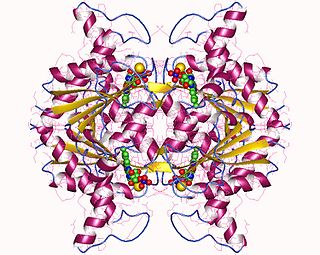| dimethylamine dehydrogenase | |||||||||
|---|---|---|---|---|---|---|---|---|---|
| Identifiers | |||||||||
| EC no. | 1.5.8.1 | ||||||||
| Databases | |||||||||
| IntEnz | IntEnz view | ||||||||
| BRENDA | BRENDA entry | ||||||||
| ExPASy | NiceZyme view | ||||||||
| KEGG | KEGG entry | ||||||||
| MetaCyc | metabolic pathway | ||||||||
| PRIAM | profile | ||||||||
| PDB structures | RCSB PDB PDBe PDBsum | ||||||||
| Gene Ontology | AmiGO / QuickGO | ||||||||
| |||||||||
In enzymology, a dimethylamine dehydrogenase (EC 1.5.8.1) is an enzyme that catalyzes the chemical reaction
- dimethylamine + H2O + electron-transferring flavoprotein methylamine + formaldehyde + reduced electron-transferring flavoprotein
The 3 substrates of this enzyme are dimethylamine, H2O, and electron-transferring flavoprotein, whereas its 3 products are methylamine, formaldehyde, and reduced electron-transferring flavoprotein.
This enzyme belongs to the family of oxidoreductases, specifically those acting on the CH-NH group of donors with a flavin as acceptor. The systematic name of this enzyme class is dimethylamine:electron-transferring flavoprotein oxidoreductase. This enzyme participates in methane metabolism. It employs one cofactor, FMN.






